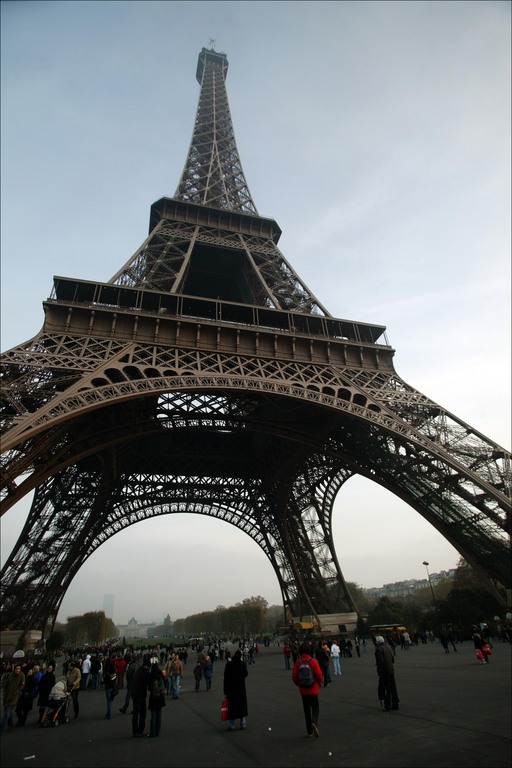Interesting Facts About Eiffel Tower

About The Tower And Its Architect
When Eiffel Tower was inaugurated on March 31, 1889, nobody had imagined that this elaborate structure of steel would become France's national symbol and the most recognised icon of the modern age. The construction was completed in a period of two years, two months and two days.
Gustave Eiffel, a French engineer who specialised in revolutionary steel constructions, was the architect of Eiffel Tower. Eiffel was born in Dijon in 1832 and graduated from the Ecole Centrale des Arts et Manufactures in 1855. He spent several years in the South West of France supervising work on the great railway bridge in Bordeaux. In 1864, he set up his own construction business, with metal structural work being his speciality.As a constructor, Eiffel has to his credit marvellous projects such as the Porto viaduct over River Douro, the Garabit viaduct, Pest railway station in Hungary, the dome of the Nice Observatory, and the ingenious structure of Statue of Liberty. Undoubtedly, it was Eiffel Tower which took his career to its peak.
Facts About The Tower
Currently, Eiffel Tower is the fifth-tallest structure in France. The mass of the total structure of the tower is 7300 tonnes. There are 1660 steps. For the public it is not possible to get to the summit by means of the stairs, elevators are necessary beyond the second platform.
The top of the tower can increase up to 18 centimetres due to thermal expansion of the metal on the side facing the sun. The tower also sways to six to seven centimetres due to wind.
Scientific Significance Of The Tower
Eiffel realised that the height of the tower could be utilised as an observatory. In 1889, he started using the peak of the tower as an observation station for the measurement of the wind speed. Other scientists also conducted experiments at the tower. Subsequent to experimentation in the sphere of meteorology, Eiffel began to observe the relationship and the effects of wind and air resistance. This science was later on classified as aerodynamics, which has now become an essential part of military and commercial aviation as well as rocket technology.
In 1910, Gustave Eiffel achieved extraordinary results in measuring the wind resistance of a flat plate by using the Eiffel Tower as a test platform. To overcome the lack of available measuring instruments, Eiffel proceeded on to a quest for more sophisticated knowledge of aviation which ultimately led to wind tunnel experiments.
In order to safeguard the tower from wear and tear, huge maintenance work is essential. This programme includes applying 50 to 60 tonnes of three graded tones of paint once every seven years to protect against rust. At each occasion when it is required to paint, the shade of paint is changed. Currently, the tower is painted with a shade of brownish-grey - the darkest layer is painted on the top which gets lighter towards the bottom.

Role Of Eiffel Tower In Communication
The Eiffel Tower has played a role in communication since the first decade of the preceding century. French radio, though regular transmission was started in 1922, maintained an aerial on the tower, and began transmissions from the tower in 1918. For FM (Frequency Modulation) and TV transmission, the Eiffel Tower has been an important platform since 1957.
Lee de Forest, a French engineer and scientist who wanted to pioneer wireless telephony, broadcasted a phonograph record show from the Eiffel Tower on January 12, 1908, for an audience of less than 50 people; the show was heard over 500 miles from the tower. This occasion is marked as the first ever experience of long-distance radio message transmission.
Eiffel Tower also has the distinction of being an active part of the first transatlantic and transcontinental radio telephone call. On October 21, 1915, radiotelephone communication was made between Naval radio station NAA at Arlington, Virginia and the Eiffel Tower.






